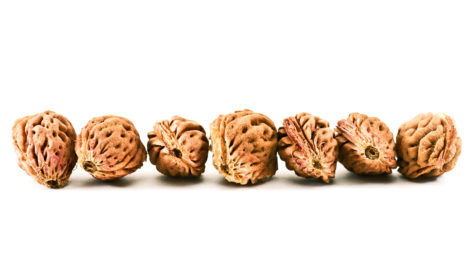Monthly Archives: November 2018
Herbal Remedies For Toothache Pain
A toothache is one of the most annoying and painful experiences that one can have. It can really put a damper on someone’s entire day if he or she cannot find something to tame it. Because of the infection that can spread to other parts of the head, without treatment, a bad abscess and toothache can be life threatening. For this reason, it’s important to see a dentist as soon as possible.
If you’re desperate, these inexpensive, effective and easily accessible toothache home remedies may help alleviate your pain before you get to your appointment.
There are quite a few natural herbal remedies that work excellent for calming down a toothache. Whether a person’s pain is from a cavity, recent dental work, injury, or pure sensitivity, herbs provide a safe and natural way for pain management. Listed here in alphabetical order are some very effective herbal remedies for toothache pain.
-
Cayenne pepper:
Cayenne pepper is a well-known herb, contained in most spice cabinets. What is not well known is that cayenne pepper, which contains capsaicin, is good for curing toothache pain. The hot ingredient in it restricts the action of substance P, that plays a role in transmitting pain. To use cayenne for a toothache: Soak a smidge of the powder in a small amount of water, and then using a cotton swab apply it to the tooth.
-
Clove:
Cloves are one of the most popular remedies for a toothache. The distinctive taste of cloves comes from the chemical eugenol, which is an antiseptic. Cloves have a very strong taste, but they quickly relieve tooth and gum pain. The best way to use cloves is to administer them directly to the site of the pain. Clove oil is commonly used for treatment. Few drops of the oil can be applied to the pain area using a cotton swab. If there is a cavity present, the oil can be applied directly over the cavity for maximum results. Chewing clove seeds is equally effective.
-
Garlic:
Garlic is one of the most effective home remedies for tooth pain. There is a chemical found exclusively in garlic called allicin with antibiotic properties that slow down bacterial affects. When the bacteria decrease, so does the pain. By applying a clove of crushed garlic directly on the affected tooth, the allicin is released and should immediately help alleviate the pain.
-
Ginger:
Ginger helps to alleviate toothache pain. The steps for preparing the remedy are: Cut ginger root into small pieces, grind it well and mix it with little water to make a paste. This paste can be applied over the pain area to get some quick relief. Chewing small slices of ginger is also effective, but it is too hot to withstand.
-
Guava Leaves:
Guava tree leaves have been used for this purpose in many tropical cultures. There are 2 common uses. You can chew 1-2 leaves until the liquid comes out on the tooth, or you can put 4-5 guava leaves in a pot with some water. Bring nearly to a boil, then let cool to a warm temperature. Add some salt to the solution, swish or gargle in the mouth and spit. Repeat this process, being sure to allow the liquid to swish into the aching tooth.
-
Ice:
Apply an ice pack to the cheek above the affected tooth. You can also do an acupressure ice massage. Rub an ice cube into the V-shaped area where the bones of the thumb and forefinger meet. Gently push the ice over the area for 5 to 7 minutes.
-
Onion:
Raw onion has antiseptic properties, so chewing raw onion for 3 minutes can help. If it is too painful to chew, you can simply place a piece of raw onion directly on your tooth.
-
Plantain:
Raw plantain leaves crushed and placed on the aching tooth will also help stop a toothache. If you happen to have a little salt with you, mix a little salt with the chewed leaves.
-
Sage:
Garden age serves many medicinal purposes such as calming anxiety and controlling menopausal symptoms. On top of all of its other great abilities, this herb is fantastic for a toothache. The best way to use sage is in the form of infusion or tea. The user can make a strong infusion by boiling the leaves in a cup of water for 10-15 minutes. Holding it in mouth for sometime reduces inflammation and gum infection. Sage will work to calm the toothache and whiten the teeth as well. It has a natural ability to whiten the teeth.
-
Salt and Pepper:
Salt mixed with pepper is an age-old remedy for a toothache. Mix 1/4 teaspoon pepper and 1/4 teaspoon salt with a few drops of water into a paste. Apply directly on the affected tooth and let sit for several minutes.
-
Spinach Leaves:
Raw spinach leaves provide a similar effect to the guava leaves. Simply chew raw spinach leaves against the aching tooth or crush it into a paste to press against the affected area.
-
Tea Tree Oil:
A few drops of tea tree essential oil can be infused in water. Cleansing the mouth with this solution can give rapid relief to inflamed gums. It is a very potent antibacterial.
-
Turmeric:
This herb has anti-inflammatory and antibacterial properties. It is used in several natural tooth care products. The steps for preparing a toothache remedy are: Make a paste with 1 teaspoon turmeric powder and ½ teaspoon salt, mixed with mustard oil (water will do). Applying this paste onto the affected tooth will ease the pain.
-
Vanilla Extract:
Vanilla extract can also help, aided by its alcohol content. Apply 3-4 drops of vanilla extract onto a cotton swab and hold directly against the affected tooth several minutes for immediate relief.
-
Wheatgrass Juice:
Wheatgrass juice is another natural way to stop pain as well as help reverse tooth decay. Being a natural antibiotic, wheatgrass juice naturally draws out toxins that may be in the gums. This toothache home remedy helps stop the infection from spreading which in turn reduces tooth pain. Use wheatgrass juice as a mouthwash to draw out toxins, or you can chew on wheatgrass for similar results.
-
Whiskey:
Take a “shot” to numb the pain. Hold a swig of whiskey over the painful tooth. Your gums will absorb some of the alcohol and that will numb the pain. Spit out the rest (optional).
-
Yarrow:
Yarrow is a natural anesthetic that has a sweet and spicy flavor. It is also widely used for its aroma. Yarrow is also known as the nosebleed plant. It is great for toothaches because it is an anesthetic. However, yarrow also has the ability to stop bleeding and promote wound healing. Because of its usefulness in stopping bleeding the herb was called herbal militaris for almost hundred years. To treat a problem area, one would simply need to apply the extract of roots or leaves to the gums or teeth.
Collected from various sources
A Very Good Remedy For The Gravel
 From Pow-Wows, or Long Lost Friend, by John George Hoffman, [1820], we have this “very good remedy” for kidney stones (the gravel).
From Pow-Wows, or Long Lost Friend, by John George Hoffman, [1820], we have this “very good remedy” for kidney stones (the gravel).
The author of this book, John George Hohman, applied this remedy, and soon felt relieved. I knew a man who could find no relief from the medicine of any doctor; he then used the following remedy, to wit:
he ate every morning seven peach-stones before tasting anything else, which relieved him very much;
but as he had the gravel very bad, he was obliged to use it constantly. I, Hoffman, have used it for several weeks. I still feel a touch of it now and then, yet I had it so badly that I cried out aloud every time that I had to make water. I owe a thousand thanks to God and the person who told me of this remedy.
Saida: Salves To Heal Up Wounds
Brenda-Lee: Egg White Cough Cure
Pat Scott: Marsh Mallow Ointment
Sharon from Cleveland, Ohio: Egg White Cough Cure
Vagabond Witch: Soapwort Shampoo


